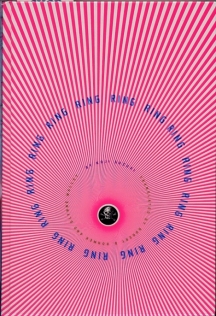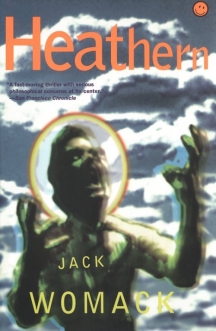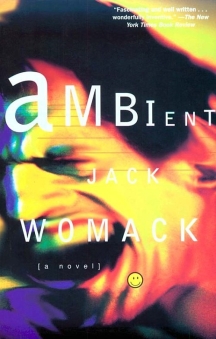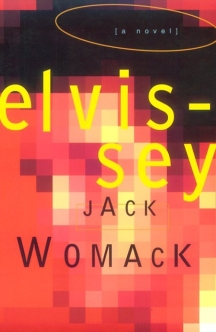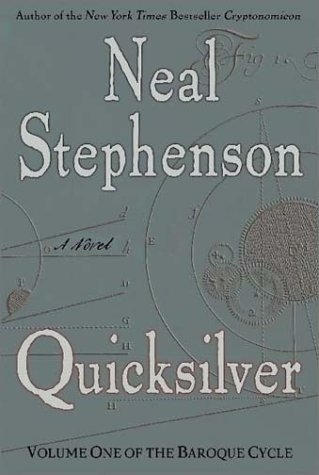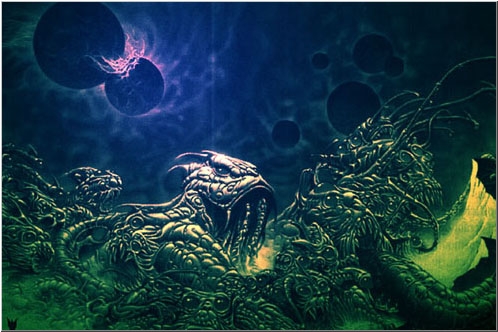"With
THE BAROQUE CYCLE, his most ambitious project
to date, Stephenson once again wields his pen
with a ferocious intelligence and razor-sharp
wit. Loosely connected to Cryptonomicon,
his previous New York Times best-selling
novel, this massive three-book work features
the ancestors of the main characters in its
three volumes: QUICKSILVER, September 23,
2003, THE CONFUSION April 4, 2004 and THE
SYSTEM OF THE WORLD, October 4,
2004. Cryptonomicon, a powerfully
imagined tale of family secrets, codes and
conspiracies has sold more than 400,000
copies in hardcover around the
world.
QUICKSILVER
Volume one of THE BAROQUE CYCLE (William
Morrow/An Imprint of HarperCollinsPublishers,
September 2003; ISBN 0- 380-97742-7; $27.95,
$39.95 CAN)spans the period 1647 to
1713. Civilization gives way to
something that is neither astrology nor
alchemy. Something new is bubbling up
among those looking to describe Creation and
understand the world, a new way of speaking
and thinking. Through a masterfully described
series of "marryings, couplings, dyings,
religious conversions, wars, revolutions,
miscarriages…decapitations" we perceive
this is a period of momentous flux and
change. Powerful forces are at work in the
worlds of science, commerce and religion
&endash; and we will meet those who change
history utterly &endash; as well as those who
are changed by it.
It is the
year of Our Lord 1713; Enoch Root is wading
through the endless tidal flats and
cattail-filled marshes of Boston, in search
of Daniel Waterhouse. It seems Dr.
Waterhouse has not paid his dues to a new
Society &endash; a Society of Philosophers,
Natural Philosophers, grouped together in a
new Clubb, "The Royal Society of London".
… "It was a bad idea," says Enoch to
land on Sir Isaac's Shit List." Amongst
a group of Harvard men - "pompous sots and
peering quick-faced men basting their
sentences together with bad Latin" he learns
that Dr Daniel Waterhouse has just endowed
the "corner-log" of the brand new
"Massachusetts Bay Colony Institute of
Technologickal Arts."
With that
Stephenson is off and running &endash; an
emerging Europe, the New America and an epic
tale amongst 'possessed men' who know that
"something was happening". Regulated by the
tick tock of Huygen's pendulum-clock, time,
now fixed and invariant, set into motion a
Time of Natural Philosophy. The forefront of
knowledge was being swept back at a pace so
fast that "lads are torn in every direction
at once, like a prisoner being
quartered. Or eighthed, or
sixteenthed. Should l study mathematics?
Euclidean or Cartesian? Newtonian or
Leibnizian calculus? Or should I go the
empirical route? Will it be dissecting
animals then, or classifying weeds, or making
strange matters in crucibles? Rolling balls
down inclined planes? Sporting with
electricity and
magnets?"
It
transpires that Enoch Root is under royal
instruction to find Daniel
Waterhouse. The prospective Queen of
England &endash; Princess Caroline of Ansbach
is seeking reconciliation between Isaac
Newton and Wilhelm Gottfried Liebniz and
Daniel must return to England to solve the
schism that has developed in the calculus
dispute between the British and the
Continentals.
It was
after all, Enoch Root who unearthed the young
Isaac Newton almost fifty years before
&endash; and it was Enoch who uniquely
understood the curves of the relationship
between this gifted boy and his willing
acolyte, Daniel Waterhouse. By shoving
darning needles into his eyeball while
studying at Cambridge, Newton continues the
experiments and studies begun as a boy, and
by inquiring into the very principal of
things, teaches himself &endash;and his
assistant Daniel, more about 'the human eye
than anyone who had ever lived.' It is
intoxicating for twenty-one year old Daniel
&endash; his Puritanical past led him to
study for the impending Apocalypse, now he's
soaking up this newfound knowledge of the
world as a "permanent ongoing epiphany, an
endless immersion in lurid radiance, a
drowning in light, a ringing of cosmic
harmonies in the
ears."
"Might
things actually be getting better, with the
promise of continuing to do
so?"
The
second book within QUICKSILVER &endash;
King of the Vagabonds &endash; emerges from
the Mud below London. It is 1665 and
Jack Shaftoe, urchin mudlark hams it up with
his brothers as the Condemned wait to die at
Newgate prison. He goes on to make a
living as a pretend Musketeer in France, in
the gainful employ of the Elector Palatine
and concerns himself with where the best
looting could be found. As "English scum
of the earth in good boots" he roams
Continental Europe, chasing ostriches and
rescuing slave-girls from a Turk's Harem near
Vienna. It is in Austria, that
half-cocked Jack (to wit an unfortunate near
miss with a cauterizing tong) first meets
Eliza. Blue Eyes.
She is a
young woman whose ingenuity keeps her alive
after being set adrift from the Turkish Harem
in which she was imprisoned as a
child. Her great beauty, bravery and
intelligence will soon take her from wretched
captivity all the way the inner sancta of the
finest Houses of Europe and most of the Royal
Courts. She's also very funny. Jack
and Eliza traverse seventeenth century
Europe, meeting en route Barbary pirates,
bawdy courtiers and a loose collection of
horse-thieves.
Eliza's
story develops in Book Three:
Odalisque. She has met the comte d'Avaux
then William of Orange and enters the court
of Louis XIV &endash; and the sumptuous
palace of Versailles. The story unfurls
at a dizzying pace.
Told on a
panoramic scale and with a wildness rarely
seen in fiction today, the vivid journeys of
the characters intertwine against the
backdrop of history. Samuel Pepys, the
young Ben Franklin and Hooke collide at the
intersection of history and technology: when
markets became free, monarchy was overthrown
and Western Civilization opened up to the
thrill of the new.
It is
with great pride that we present you with
QUICKSILVER, Volume One of THE BAROQUE CYCLE.
"
